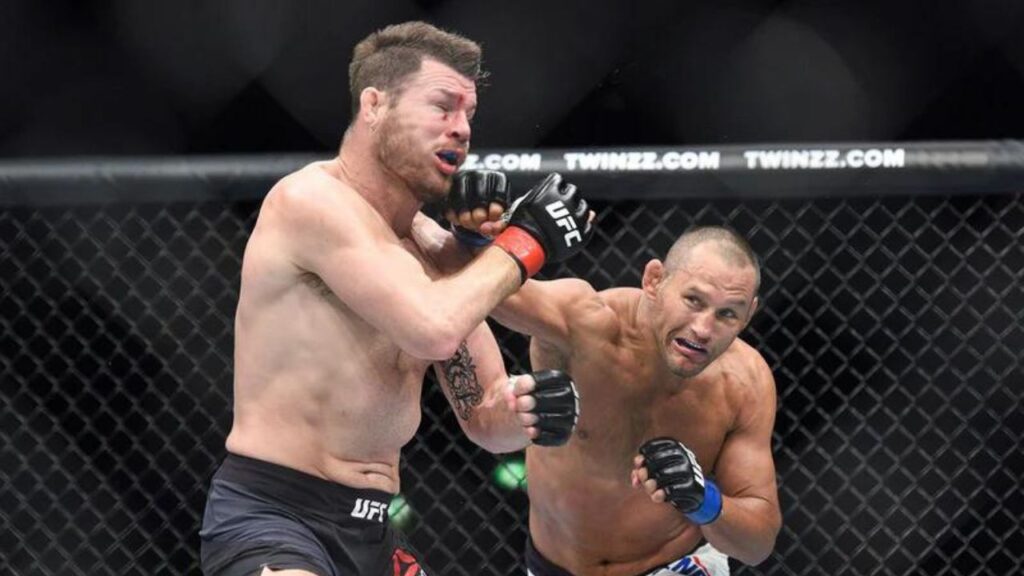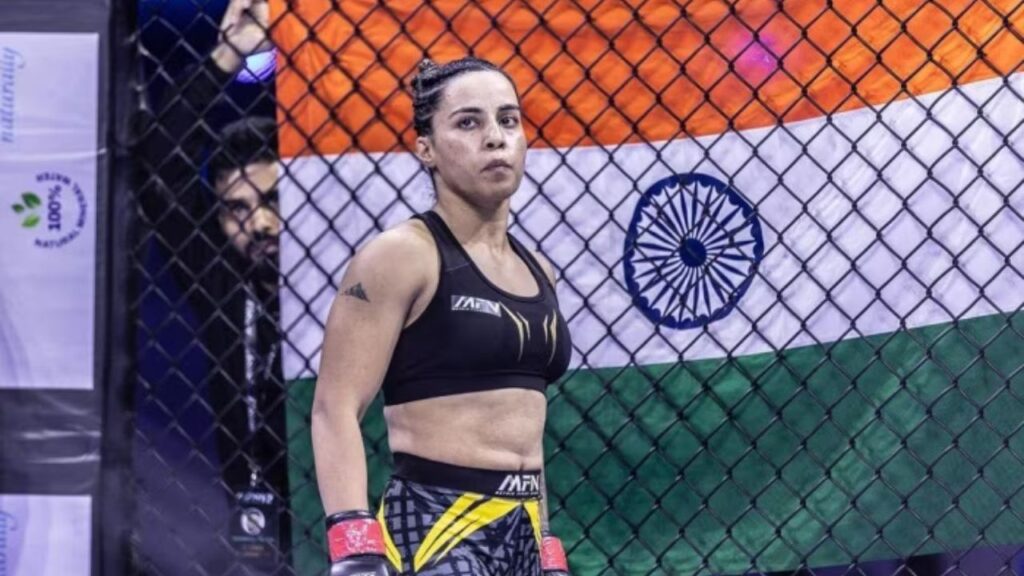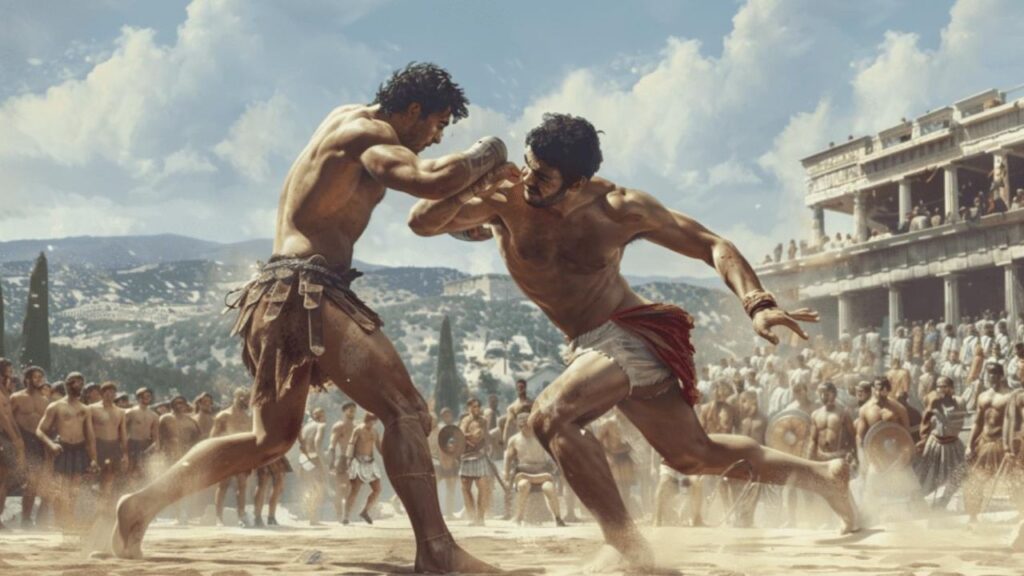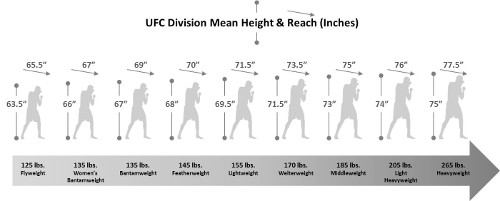MMA; A form of modern combat sports

Martial Arts is any kind of fighting with a specific method of practice. Many martial arts originate in certain countries. They are used for a variety of reasons, including fighting, self-defense, sports, self-expression, discipline, confidence, fitness, relaxation, and meditation Over the years the art has gone under several developments and categories. One such category is Mixed Martial Arts (MMA). It is one of the world’s fastest-growing sports.
MMA has been a dynamic sport and full-contact combat sport in the world. It is essentially a sport in which fighters from any martial discipline, such as boxing, karate, jiu-jitsu, wrestling, and judo, can compete using rules that allow for kicking, punching, and grappling techniques. The art form can be done both stand-up and on the ground. The fight is usually taken inside a closed cage with metal fencing, a traditional boxing ring, or in amateur competitions, sometimes a simple matted area is used. In various parts of the world, it has gained viewership.
Is MMA important in India?

Combat sports have gained immense popularity in India as well. UFC (Ultimate Fighting Championship) is a famous American MMA (mixed martial arts) promotion company. It was founded back in 1993 and has a total revenue is around 1.3 billion USD. They are spreading their business in various parts of the world. UFC India is one such growing industry. They might even positively transform the whole MMA business in India.
Nowadays, Indian UFC fighters like Ritu Phogat and Anshul Jubli have shown the country the positives of being a MMA fighter. Young guns of the country can also try their fortunes in any kind of MMA or even in the UFC championship to bring in glory for the nation. And make a name for themselves in different fields except the major sports. Before they fight in this sport they should look at the history of the sport to understand it better.
What is the history of MMA?

The origin of combat sports goes back to 648 BCE in ancient China. It is where the martial art Leitai combined diverse Chinese martial arts. During that time a similar combat sport known as pankration, which combines wrestling and striking techniques. It was a mirror of Greek army combat training. Similar sports were practiced in ancient Egypt, India, and Japan. This is a shocking fact that even before the birth of Christ how can such a modernised sport be so popular?
In the 19th century, different fighting types of MMA arose, providing the groundwork for modern mixed martial arts (MMA). Savate, a French kickboxing form that competed with bare-knuckle boxing and karate, first appeared in the mid-19th century. Later in the 20th century, Sambo was created by Russian martial artists who combined wrestling, judo, and striking techniques. Hybrid combat sports emerged around the world.
This included Vale Tudo in Brazil, which was highly influenced by Brazilian Jiu-Jitsu and the Gracie family. In the late 20th century Brazilian Jiu-Jitsu arrived in the United States. That helped to mark the beginning of UFC in the USA in 1993. The UFC was first criticized for having less imposed rules. However, the sport evolved into a more regulated and safety-conscious version of full combat mode.
This showcases how a sport can develop if it is given time and encouragement for years. But one question remains has it gained immense popularity in other countries except the USA? In the world, it has never been followed or watched compared to football and cricket. The MMA should also need their best viewerships to rise more in different countries.
Does MMA have distinctive rules for every organization?
Like every other game, MMA also has some rules to be followed and has been implemented in various subparts. Not following the rules might also take the life of a fighter in the match. However, there are specific rules for different MMA fighting organizations. The rules are mentioned in the Unified Rules of MMA where the actual rules for the fights have been explained in detail.
They provide a clear set of rules regulating professional MMA competition that are uniform across the jurisdictions of different athletic commissions and other regulatory authorities. The structure for the Unified Rules of MMA was developed and agreed upon by several sports commissions in the 2000s. The Association of Boxing Commissions (ABC) unanimously ratified it on July 30, 2009.
MMA has a set of rules designed to ensure fair competition and the safety of the participants. Some of the key rules include. Except for this, there are the following acts that constitute fouls in a contest or exhibition of mixed martial arts. They may result in penalties, at the discretion of the referee, if committed:
Here are the no’s MMA
- Butting with the head
- Eye gouging of any kind
- Biting or spitting at an opponent
- Fish hooking (the act of inserting a finger or fingers or one or both hands into the mouth or nostrils of a person, pulling away from the centerline of the body)
- Hair pulling
- Spiking an opponent to the canvas on his head or neck
- Strikes to the spine or the back of the head
- Throat strikes of any kind, and/or grabbing the trachea
- Fingers outstretched toward an opponent’s face/eyes
- Downward pointing elbow strike (’12 to ‘6 strike)
- Groin attacks of any kind
- Kneeing and/or kicking the head of a grounded opponent
- Stomping a grounded opponent
- Holding opponent’s gloves or shorts
- Holding or grabbing the fence or ropes with fingers or toes
- Small joint manipulation
- Throwing an opponent out of the ring/fighting area
- Intentionally placing a finger into any orifice or any cut or laceration of an opponent.
- Clawing, pinching, or twisting the flesh
- Timidity (avoiding contact with an opponent, intentionally or consistently dropping the mouthpiece, or faking an injury)
- Using abusive language in the fighting area
- Flagrant disregarding of the referee’s instructions
- Unsportsmanlike conduct that causes injury to an opponent
- Attacking an opponent after the bell has sounded the end of the period of unarmed combat
- Attacking an opponent on or during the break
- Attacking an opponent who is under the care of the referee
- Interference from a mixed martial artist’s corner or seconds
Are the rules too harsh for the athletes or the fighters? But keeping in mind the safety measures of such kind of sports it is always better to have some strict rules so that no athlete is being harmed during their course of action.
There are more to add to these rules
- Disqualification may result from any combination of fouls or a flagrant foul, at the discretion of the referee.
- Fouls may result in the official scorekeeper deducting one point from the offending contestant’s score. The scorekeeper, not the judges, will be in charge of computing the true score after accounting for the point deduction.
- Only a referee can call a foul. If the referee does not call the foul, judges must not decide on their own and should not include it in their scoring calculations.
However, these rules are the same for different classes for the men and women categories in the MMA fights.
MMA’s weight classes for men and women

Competition in MMA is split up into divisions, based on a weight range.
Men’s Divisions
- Flyweight (125-pound limit)
- Bantamweight (135-pound limit)
- Featherweight (145-pound limit)
- Lightweight (155-pound limit)
- Welterweight (170-pound limit)
- Middleweight (185-pound limit)
- Light Heavyweight (205-pound limit)
- Heavyweight (265-pound limit)
Women’s Divisions
- Strawweight (115-pound limit)
- Flyweight (125-pound limit)
- Bantamweight (135-pound limit)
- Featherweight (145-pound limit)
Except for the divisions of the categories, there are certain benefits to the MMA as well. That men and women can have while practicing the sport.
What are the benefits of MMA?
Mixed Martial Arts offers various physical, mental, and holistic benefits. It contributes to its widespread popularity. Here are some key advantages associated with practicing sports.
1. Physical Fitness
MMA provides intense cardiovascular workouts and helps enhance overall endurance and stamina. They also provide full-body strength and conditioning through activities like grappling, striking, and ground fighting. Techniques such as stretching and dynamic movements help improve flexibility. It reduces the risk of injuries.
2. Skill Development
MMA helps foster some skill sets that include striking, grappling, submissions, and defensive techniques. It also aids with practical self-defense skills, teaching effective strategies for real-life situations.
3. Mental Toughness
MMA needs commitment as well as effort. The fast-paced nature of MMA necessitates increased focus and concentration, which aids with mental sharpness.
4. Weight Management
Mixed Martial Arts help to keep the weight of a fighter proper, through high-intensity training, aiding in fat loss and muscle development. The sports also encourage a healthier lifestyle, including proper nutrition and regular exercise.
5. Stress Relief and Confidence Building
MMA helps the release of endorphins, thus creating a positive mood and reducing stress. It also helps in building confidence through mastering techniques or achieving fitness goals and boosts mental health and self-esteem.
MMA can help to get better results in a way for modern kids as well. Parents should lead them to the training ground rather than being on the phone or in front of the television and practicing such fights or getting inspired by the likes of WWE without any proper training. Have you ever tried MMA or any kind of combat sports? What is your best memory of MMA or UFC fights, do let us know in the comments. For more such updates on MMA follow sportsdrip.co.
Also Read: Types of post-workout foods for recovery
Also Read: Shakib Al Hasan secures parliamentary seat with massive votes
Also Read: Navgire’s half-century leads UP Warriorz to victory


